#4. Analog synthesis
Explore tagged Tumblr posts
Text
Download Karanyi Sounds – Analog Nightmares for Vintage

Karanyi Sounds presents Analog Nightmares, a virtual instrument that transports you to the captivating world of retro synthesis. Explore the rich tapestry of analog soundscapes, where warm basslines, lush pads, and gritty leads reign supreme. Whether you're a seasoned synth aficionado or a newcomer to the realm of electronic music, Analog Nightmares offers a treasure trove of vintage-inspired sounds to ignite your creativity and elevate your productions.
Analog Nightmares meticulously captures the essence of classic Karanyi Sounds – Analog Nightmares Download analog synthesizers, blending authentic samples with modern processing techniques to deliver a sonic palette that's both timeless and cutting-edge. From the warm, pulsating tones of yesteryear to the edgy, distorted textures of tomorrow, each sound is infused with the character and charm of vintage hardware, inviting you to explore new sonic horizons and push the boundaries of your musical imagination.
#1. Virtual instrument#2. Synthesizer#3. Karanyi Sounds#4. Analog synthesis#5. Retro#6. Vintage#7. Electronic music#8. Sound design#9. Music production#10. Creative expression#11. Synthwave#12. Ambient#13. Cinematic#14. EDM#15. Texture#16. Modulation#17. Effects#18. Sample library#19. Nostalgia#20. Artistic exploration
2 notes
·
View notes
Text
Homestuck Is For Cat People
(page 928-941)


KITTEN UPDATE: Rose has picked up the kitten and is cradling it so gently.
The big development here is another APPEARIFIER, this one green (on theme with the lab) and perhaps a different model as it has this arcade cabinet setup instead of the big flat Playstation Portable that WV had (p.738). A coin-operated appearifier is a fun thought and I’m glad the idea was planted in the story, even if it didn’t come to pass.
This appearifier can be adjusted in time, but has been specifically locked onto Rose’s childhood cat Jaspers, who is apparently a Very Important Cat – there’s a special catlock symbol on the bottom of page 929. The funniest reveal is that Jaspers was always wearing a suit, and was fitted with a new one for the funeral, but not his first one.
And then we zoom out and see BABY ROSE. So small. Giant wet anime eyes way too big for her face. This is from Thursday September 7, 2000, and Rose was born in the winter of 95/96, so she’s 4 close to turning 5, and she is already a therapist and (according to unreliable present Rose) may have written the phrase ‘characteristically recalcitrant’ in a notepad.
Rose’s immediate instinct upon seeing this is to cause a time paradox. As though she doesn’t have enough problems already.
KITTEN UPDATE: The kitten is clinging to the trailing end of Rose’s scarf.
Rose creates a slime-cat just as WV creates a slime-pumpkin (p.752), and then we get a MASSIVE lore bombshell. This appearifier is connected to a slime chamber/DNA sequencer, automatically sucking up the paradox slime which contains the DNA of whatever was/wasn’t appearified. (I can confirm from Real Life that molecular biology sometimes involves slime).
If it’s working, the machine then creates a PARADOX CLONE; an actual, living, non-slime embryo of the creature which can most likely grow like any other creature of its species. This one isn’t quite working; the kitten nibbling the scarf is actually a very close copy but the two-headed version in a jar is a step backwards. These are, apparently, ‘unsuccessful attempts to perfect the science of ECTOBIOLOGY.’
‘Ectobiology’ is written in green in the narrative so we know it’s important. And it is a very green and slimy word. Maybe a word that could describe a kid wearing a green slime ghost shirt. John is (or wants to be) someone who clones creatures through appearification, sequencing, and synthesis. It’s… weirdly analogous to how alchemy works in Sburb. Appearifying the slime = dispensing the cruxite, a raw material to work on. Sequencing the DNA = carving the totem, encoding the specific data. And synthesizing a clone = alchemizing an object, creating something physical out of digital data. It actually seems really easy, and like it doesn’t require any actual biology knowledge. But how does John know about this science when we’ve never seen it mentioned outside this ominous underground lab? And does John have plans with this? Specific clones he’d like to create??
Jaspers ‘tells Rose a secret’ and again I am wondering if we are supposed to take this literally, if cat speech is possible via Skaia’s will or if this is a weird false memory of Rose’s. And then he’s appearified away, by someone who isn’t Rose at some point in the past/future. For exactly two weeks his location is hidden by static; then he returns battered, and then we get the Jaspers-centric animated page, something I wasn’t expecting for today but am thrilled to have.
KITTEN UPDATE: The kitten is blinking all four eyes in sequence, like a crowd doing the wave.
A funeral dirge filled with purrs and meows plays as we see Jaspers’ extravagant funeral (complete with Mom’s martini glass and what looks like a funeral lab coat?), time in the mausoleum, and journey to the lab and transportalization today to somewhere with a gray square-patterned carpet. I don’t think we’ve seen this specific carpet before, but we have seen some geometric gray carpets in Jade’s house (for example, p.914). This is intercut with moments of the new mutant kitten chewing on Rose’s scarf, rolling around, and being generally adorable. Surely Rose is falling in love with this kitten as much as I am.
Rose appearifies Jaspers back and with ‘all this sorted out’ (p.940) grabs both cats and transportalizes away to who knows where. I do not feel like anything is sorted out. I actually have nothing but questions. But I’m glad Rose is feeling good.
Thinking through all this. Someone – presumably Rose’s mom – has been trying and failing to specifically recreate Jaspers. We know that resurrecting Jaspers via Sburb is a big goal of Rose’s, even if she’s reluctant to admit it, so that’s a big parallel between these two characters who have a lot of distance and hostility. Rose was so young when Jaspers disappeared that losing him must have been a formative memory. Jaspers was likely Mom’s cat from before Rose was born; her cat plushies suggest she’s a cat lover in general. She might have been working on getting Jaspers back ever since the moment he disappeared. The question is, does she want him back for herself or for Rose?
It's also possible that this setup has been here even longer, and that Mom herself appearified Jaspers from Rose’s therapist couch that day. Maybe accidentally, and it had bad effects, and she’s been trying to create a new Jaspers ever since as an apology (a real Dr Frankenstein way to approach interpersonal relationships but GREAT characterization) or maybe on purpose for some more nefarious/experimental reasons, considering the ‘no accessible feed’ during the time between his disappearing from Rose’s side and reappearing at the river.
KITTEN UPDATE: The kitten has been PRETTY DECENTLY ESCAPALIZED along with Rose!
> Rose: Check for additional cats in your new surroundings.
#homestuck#reaction#i got a 100% on my first big school assignment!!!!#which counts 15% of my grade for the whole year!!!!#i literally didnt believe it when i saw the number i was like 'that cant be real'#only bad thing is i didnt get given any areas for improvement. which would have helped. but im not gonna complain abt this lmao#just glad im on track and able to handle the material :D#chrono
28 notes
·
View notes
Text
2024 Book Review #4 – War in Human Civilization by Azar Gat

This is my first big history book of the year, and one I’ve been rather looking forward to getting to for some time now. Its claimed subject matter – the whole scope of war and violent conflict across the history of humanity – is ambitious enough to be intriguing, and it was cited and recommended by Bret Devereaux, whose writing I’m generally a huge fan of. Of course, he recommended The Bright Ages too, and that was one of my worst reads of last year – apparently something I should have learned my lesson from. This is, bluntly, not a good book – the first half is bad but at least interesting, while the remainder is only really worth reading as a time capsule of early 2000s academic writing and hegemonic politics.
The book purports to be a survey of warfare from the evolution of homo sapiens sapiens through to the (then) present, drawing together studies from several different fields to draw new conclusions and a novel synthesis that none of the authors being drawn from had ever had the context to see – which in retrospect really should have been a big enough collection of dramatically waving red flags to make me put it down then and there. It starts with a lengthy consideration of conflict in humanity’s ‘evolutionary state of nature’ – the long myriads between the evolution of the modern species and the neolithic revolution – which he holds is the environment where the habits, drives and instincts of ‘human nature’ were set and have yet to significantly diverge from. He does this by comparing conflict in other social megafauna (mostly but not entirely primates), archaeology, and analogizing from the anthropological accounts we have of fairly isolated/’untainted’ hunter gatherers in the historical record.
From there, he goes on through the different stages of human development – he takes a bit of pain at one point to disavow believing in ‘stagism’ or modernization theory, but then he discusses things entirely in terms of ‘relative time’ and makes the idea that Haida in 17th century PNW North America are pretty much comparable to pre-agriculture inhabitants of Mesopotamia, so I’m not entirely sure what he’s actually trying to disavow – and how warfare evolved in each. His central thesis is that the fundamental causes of war are essentially the same as they were for hunter-gatherer bands on the savanna, only appearing to have changed because of how they have been warped and filtered by cultural and technological evolution. This is followed with a lengthy discussion of the 19th and 20th centuries that mostly boils down to trying to defend that contention and to argue that, contrary to what the world wars would have you believe, modernity is in fact significantly more peaceful than any epoch to precede it. The book then concludes with a discussion of terrorism and WMDs that mostly serves to remind you it was written right after 9/11.
So, lets start with the good. The book’s discussion of rates of violence in the random grab-bag of premodern societies used as case studies and the archaeological evidence gathered makes a very convincing case that murder and war are hardly specific ills of civilization, and that per capita feuds and raids in non-state societies were as- or more- deadly than interstate warfare averaged out over similar periods of time (though Gat gets clumsy and takes the point rather too far at times). The description of different systems of warfare that ten to reoccur across history in similar social and technological conditions is likewise very interesting and analytically useful, even if you’re skeptical of his causal explanations for why.
If you’re interested in academic inside baseball, a fairly large chunk of the book is also just shadowboxing against unnamed interlocutors and advancing bold positions like ‘engaging in warfare can absolutely be a rational choice that does you and yours significant good, for example Genghis Khan-’, an argument which there are apparently people on the other side of.
Of course all that value requires taking Gat at his word, which leads to the book’s largest and most overwhelming problem – he’s sloppy. Reading through the book, you notice all manner of little incidental facts he’s gotten wrong or oversimplified to the point where it’s basically the same thing – my favourites are listing early modern Poland as a coherent national state, and characterizing US interventions in early 20th century Central America as attempts to impose democracy. To a degree, this is probably inevitable in a book with such a massive subject matter, but the number I (a total amateur with an undergraduate education) noticed on a casual read - and more damningly the fact that every one of them made things easier or simpler for him to fit within his thesis - means that I really can’t be sure how much to trust anything he writes.
I mentioned above that I got this off a recommendation from Bret Devereaux’s blog. Specifically, I got it from his series on the ‘Fremen Mirage’ – his term for the enduring cultural trope about the military supremacy of hard, deprived and abusive societies. Which honestly makes it really funny that this entire book indulges in that very same trope continuously. There are whole chapters devoted to thesis that ‘primitive’ and ‘barbarian’ societies possess superior military ferocity and fighting spirit to more civilized and ‘domesticated’ ones, and how this is one of the great engines of history up to the turn of the modern age. It’s not even argued for, really, just taken as a given and then used to expand on his general theories.
Speaking of – it is absolutely core to the book’s thesis that war (and interpersonal violence generally) are driven by (fundamentally) either material or reproductive concerns. ‘Reproductive’ here meaning ‘allowing men to secure access to women’, with an accompanying chapter-length aside about how war is a (possibly the most) fundamentally male activity, and any female contributions to it across the span of history are so marginal as to not require explanation or analysis in his comprehensive survey. Women thus appear purely as objects – things to be fought over and fucked – with the closest to any individual or collective agency on their part shown is a consideration that maybe the sexual revolution made western society less violent because it gave young men a way to get laid besides marriage or rape.
Speaking of – as the book moves forward in time, it goes from being deeply flawed but interesting to just, total dreck (though this also might just me being a bit more familiar with what Gat’s talking about in these sections). Given the Orientalism that just about suffuses the book it’s not, exactly, surprising that Gat takes so much more care to characterize the Soviet Union as especially brutal and inhumane that he does Nazi Germany but it is, at least, interesting. And even the section of World War 2 is more worthwhile than the chapters on decolonization and democratic peace theory that follow it.
Fundamentally this is just a book better consumed secondhand, I think – there are some interesting points, but they do not come anywhere near justifying slogging through the whole thing.
53 notes
·
View notes
Text
Oropo; the ideology of power behind being god: Part 3
Doing an analysis on Oropo proved to be a messy, disorganised process, not all that different from the actual character's actions themselves.
Every time I have tried doing this, I ended up saying nothing worthwhile and mostly just rumbled for a bit without reaching any meaningful conclusion; but I feel like I've finally found something that's actually important and can help the discussions surrounding the character.
Buckle up cause it's time for me to introduce to you all a little something also known as:
The complex of Oedipus

Conceived in 1909 by the Austrian psychoanalyst Sigmund Freud (1856-1939), the Complex of Oedipus is a section of the written paper "Analysis of a Phobia in a Five-Year-Old Boy" in which Freud outlined the fear of horses of a boy known as "Little Hans".
The psychoanalyst determined that the boy's terror was due to feelings of anger he had internalised. According to Freud, all small boys choose their mother as their primary object of desire. They subconsciously wish to usurp their father and become their mother's lover. These desires appear between the ages of 3 and 5, when a boy is in what Freud defines as the "phallic" stage of development.
This stage represents an important point in the formation of sexual identity. The analogous experience for girls is known as the Electra complex, in which girls feel a desire for their father and jealousy of their mother. The child, however, suspects that acting on these feelings would lead to danger, thus he/she represses his/her desires. This leads to anxiety.
In order to resolve the conflict, the boy then identifies with his father and the girl with her mother. It is at this point that a superego is formed; it becomes an internalisation of the parental figure that strives to suppress the ID's impulses and make the ego act upon these idealistic standards.
The ID, ego and superego are, as described by Freud, the three main parts of the human mind that develop our personality through their interactions.
The ID is the most primitive. Within the ID are all the inherited components of personality we are born with, including the sex instinct, the Eros and the instinct towards aggression. The ID operates entirely unconsciously; it does not change with time or experience, since it is not related to the external world.
The ego is the rational, pragmatic part of our personality. It's less primitive than the ID and is both conscious and unconscious; it represents what may be called reason and common sense. Freud used the word "ego" to mean a set of psychic functions such as judgment, tolerance, reality testing, control, planning, defense, synthesis of information, intellectual functioning and memory.
The superego is concerned with social rules and morals, and covers what many would refer to as "conscience". It develops around the age of 3-5 and it consists of two systems: the conscience and the ideal self. The conscience is a part that can punish the ego by making it feel guilty. The ideal self, on the other hand, creates an imaginary picture of how you ought to be, and deals with ambition and social behaviour, including how you treat others and how to be a useful member of society.
According to Freud, the ID, ego and superego, are in constant conflict so that adult personality and behaviour are directly from the results of these internal childhood struggles.
The parallels
So, now that we have established what the Complex of Oedipus is, it is time to see how it connects back to our deranged owl man and to the entire race of the Eliotropes.
At this point though, I have to make a brutal yet sad confession: I have not watched the fourth season of Wakfu nor the Oropo special with all of the new Eliotropes, so all I'm going to focus entirely on Oropo for this analysis and hope that somebody else who has watched season 4 can piece together what aspects of Freud research are present in which Eliotrope and how it all ties back to Yugo.
For now, we can see how the first four paragraphs of the document have unsettling similarities to the entire concept and actions of Oropo and the Eliotropes.
Now, we need to consider that Freud at the time probably didn't take bisexuality and other gender identities as things an individual was born with; because in the case of the Electra complex we need to remember that all female Eliotropes are canonically lesbians, as reiterated by @cocogum in this post , thus, the more modern (or at least the most Wakfu relevant) interpretation of the two complexes that we should consider is: "the child wish to usurp the parent whose at the recieving end of the kid's sexual attraction, and to overcome said urge, identifies with that parent". I could make a different case for bisexuality, but it's not relevant.
The important thing about these two complexes is explaining why Oropo feels so much attraction for Amalia to not be able to contain himself even with Lady Echo. The entire concept behind the Eliotropes is that they were incomplete parts of Yugo that came into existence by accident and couldn't survive nor have an identity of their own without Yugo.
For how much Oropo plays himself up as this secretive master planner, he's actually a mere sexually repressed clone-child that's unable to grow up due to the very nature of his existence.
Finally appreciating canon Oropo: the trilogy's finale.
I feel like, once I learned about the connection between Sigmund Freud and Oropo, I finally started to care a little bit about the guy and the entirety of the Eliotrope's race. Granted, this analysis does fix the many problems and qualms I have with the character; like, if his writing problems limited themselves to the season 3 finale then I could pass it off as just the sad, miserable conclusion of a doomed existence, but no. Unfortunately, Oropo has problems even in the manga and ova created solely to expand on his character, it's like Tot is completely unable to give his writing pet the necessary traits to make him an antagonist worthy of the Wakfu's standards, and instead just uses him for cool visuals and to fill in the untold parts of the lore.
He came up with a truly brilliant concept reminiscing the psychoanalysis of the 19th century, and couldn't find a way to explore said concept in a meaningful way because he had to turn it into a fight. Naturally, this isn't just a Wakfu problem, this is an anime and media problem at large, where we necessarily have to resolve conflicts into a battle because otherwise the audience could feel bored and disinterested in the final product.
This is a problem that carries over to the Avatar franchise, where the creators tried to have meaningful political commentary and couldn't find a meaningful way to have it that didn't involve a fight, because, if they don't turn it into a fight of good and evil, then the audience could feel scared at the prospect of such a challenging, morally compromising story.
To me, Oropo would have been a far more interesting character if he just wanted to overthrow the gods for their selfishness and wanted Yugo to approve his decisions because he was his creator and he loved him.
Could have made for a far more interesting story than just simply going back to the status quo and compromising it only through the inclusion of the Necromes, who pretty much just sought destruction and didn't really change the hierarchy in a meaningful manner.
<<<<Previous part
Nox analysis
Qilby analysis
#wakfu oropo#wakfu eliotrope#wakfu ova#wakfu yugo#wakfu amalia#wakfu echo#necromes#tot#ankama#krosmoz#sigmund freud#psychoanalysis#character analysis#oedipus#electra complex#wakfu nox#wakfu qilby#wakfu season 3#avatar the last airbender#avatar the legend of korra#status quo#wakfu manga#writing#analysis of a phobia in a five year old boy#sexuality#political commentary#superego#ego#id#essay
23 notes
·
View notes
Text
The myth of Apollo (4)
As with Dionysos previously (see here), the Dictionnary of Literary Myths of Pierre Brunel offers two different articles about Apollo. Here is the loose (but free !) translation of the second one, « Apollon, the mythical sun ».

APOLLO, THE MYTHICAL SUN
Pontus of Tyard wrote in 1552: “Of all the poetic gods, Apollo is the one that has been the most disguised by the fables and the etymologies of his name.” The mythical figure of Apollo, which has been turned in Western literature as one of the most conventional figures there can be, was considered by ancient mythographers as an extremely complex character, because he was given many names and many properties. Apollo is first and foremost an universal archetype of the Divine, of which literature kept – alternatively as much as indiscriminately – three main names: Apollo(n), Phoebus, Sun. The chronological evolution of the god allows us to isolate and separate the solar god (as a symbol) from his mythological adventures, since the solar Apollo is more present within poetry than within legends.

I/ The names of the Sun
In the Platonic tradition, all the way to the end of the Renaissance, numerous significant and diverse etymologies were invented for Apollo, all reflecting the various functions of the solar god. Within the name Apollo(n), interprets can read as much an idea of destruction as an idea of freeing (from the verb “luô”, to untie) or purification (from the verb “louô”, to clean). This reflects the “drying” effects of the sun, which can be negative or positive – and thus is a survival of the ambiguity of the archaic god.
The interpretations found within the “Cratylus” (see the previous part of “The myth of Apollo”, “The Antique Apollo) allow us to define the four main attributes of the god: medicine, divination (both seen as manifestations of “purification”), music and the art of shooting with a bow. The name Phoebus has been associated by Isidor of Sevilla with the endless youth of the ephebe (e-phoebus), while Cartari (in 1556) linked it to the vital light (phôs, light, bios, vie). For Platon, the name of “Sun” within Ancient Greek meant he who “nuances” the colors (“helios”, the sun in Greek, derived from “aïoleïn”, to nuance) ; and all the ulterior commentators assimilated it with the Latin “Sol”, tied to the adjective “Solus” (the sole, the unique, the lonely), a link which can be found in the neo-Latin languages (in French “soleil” and “seul”, for example). Cartari, who was follow the works of Plotin and Macrobe, linked this precise etymology to the Greek name of Apollo that he translated as “he who is not multiple” (“a” as a privative + “polu”, many) – highlighting again the important idea of unity within the idea of the sun-god.

II/ Main attributes
The mythographers of Renaissance made a very useful synthesis work that offers us in their roughly definitive state the various interpretations of the myth of Apollo, compiling together the commentaries from Antiquity, the interpretations from the Middle-Ages, as well as the point of view of some Oriental civilizations. Within his “Images of the Gods” (1556), Cartari divides the solar myth in a series of elements linked together as part of a long allegorical chain:
1) The sun represents at first, in the diversity and universality of its effects, an archetype of the Divinity. The Assyrians assimilated it to Jupiter as the soul of the world (because through all the other gods, it was always him who was evoked). As such Macrobe noted in his “Saturnals” that all theology always returned to the worship of the sun.
2) As a symbol of eternal youth, as the allegory of the always-new day, of the always-resurrecting light, Apollo is depicted as beardless (except for the Assyrians) and is associated with Dionysos.
3) Because of its central position within the Universe, it is called “heart of the heaven”, by analogy with the vital function of this “pulsing” organ within the human body. The sun is the source of light that communicates their movements to the other astral bodies. It is why Apollo is sitting in the middle of the nine Muses, allegories of the nine celestial sepheres, and with them he embodies the Harmony and the Universe, as a symbol of “symmetry and concordance” (according to Tyard). As such the Music of the Spheres, that R. Lulle will represent through the “Great Lyre of the Universe”, is reflected in Apollon’s association with Music and Poetry (Poetry which was originally simply the art of singing).
4) The rays of the sun are depicted by the arrows of Apollo (just like by those of his sister Diana). They can penetrate the very core of the earth – it is why there is an archaic tradition according to which Apollo is a chthonian or infernal god (and can sometimes be called Hecate, since the primitive gods were without genders).
5) It is due to the purgative and drying effects of his rays that Apollo is also the god of medicine. Mythographers tie this function of the god to the fable of the snake Python killed by Apollo soon after his birth: they assimilated Python to the mythical Flood, as a principal of morbid humidity wrapped around the earth.
6) The attribution of the laurel to Apollo, and the fable of Daphne, are explained by the medicinal virtue of the plant, the always-green plant that never rots, and that the mythographers saw as a symbol of Health. The laurel is also tied to the alchemical symbolism of Humidity, because Daphne was metamorphosed thanks to the intervention of her father, a river-god.
7) Finally, Apollo is the god of divination, because he is the eye of the sky, he sees all and he reveals all secrets (hence why in mythology Apollo was the one who denounced the adulterine love of Venus and Mars). He has the role, within the Universe, of the eye within the human body – he is the “spy of the intellect”, the “censor” or the “rector”, and his eminent position makes him a sign of omnipotence. Cartari described a hieroglyph that designated the sun as a scepter surmounted by an eye – which would identify the mythical sun with the idea of royalty.
Such a synthesis – within which each of the god’s main attributes were defined and linked together – as the interpretative model which was used as a basis for all ulterior poetry. For example take Du Bartas: in his “Sepmaine ou Création du Monde », in 1578, the sun, which is not a god anymore but a mere « ornament of the sky », is always designated by metonymy through a series of names that resume all the attributes of the solar god in his cosmic function: Phoebus with gold hair, the blond Titan, the Torch of Laton, the Archer, Apollo giver-of-souls, the Fountain of Heat, the Life of the Universe, Giver-of-honors, King of the Sky, Eye of the Day, Censor, Torch of Delph, Torch of Delos, he who “makes the face of the world young again”. In a parallel way, from Cartari’s work, the different aspects of the character will be slowly simplified until he simply becomes the god of Poetry, crowned with both sunrays and laurel leaves, sitting among the Muses on top of mount Parnassus, always holding his lyre (which can sometimes represent him in his entirety), distilling the poetic inspiration under the shape of the Hippocrene spring (created from Pegasus’ hoof), a spring that Ronsard will describe as “the fountain of verses”.
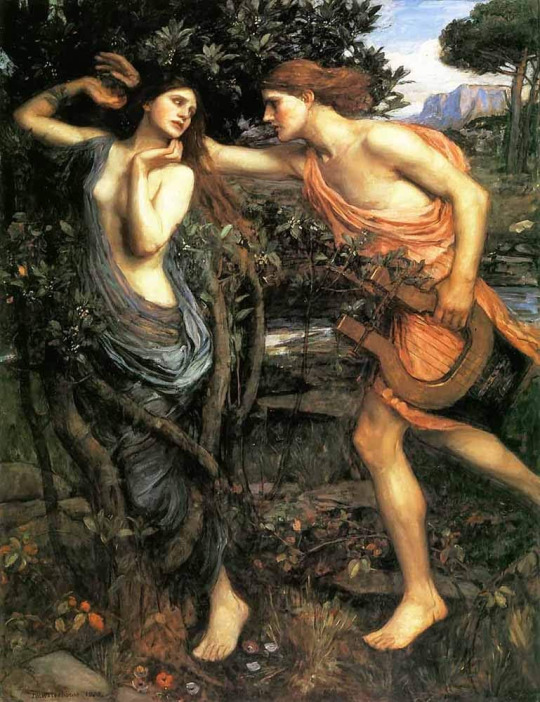
III/ The philosophical Sun
Symbol of the Philosophical Gold in the alchemical tradition, uniting the fundamental opposites that are the fire and the water, the dry and the wet ; or a symbol of the divine creative soul within Orphism and Pythagorism, the go of Poetry s the very image of all creation within the Neoplatonic literature, in which Apollo with his lyre is always associated to his “mortal double”, Orpheus. Within the Renaissance, Apollo was the god who inspired the “Poetic Fury”, without which the lyrical production cannot be: it is under his influence that (according to Ronsard’s Hymn to Autumn) the spirit can “penetrate the secret of the heavens” and the soul “rise among the gods”. It is under the sign of Apollo that the soul finds back its celestial origin through the effects of the divine enthusiasm (from the Greek “theos”, god): this is the Orphic origin of poetry. For Ronsard and the poets of La Pléiade, the “inspired Poet” is both the “prophet” and the “priest” of Apollo (hence why in the 16th century it was believed that the Sibyls and the oracles were exceptional poets).
This Neoplatonic interpretation of the myth, which confuses the two main attributes of the god, prediction and lyrical art, this same tradition that shaped the image of Apollo we have today, relies on the commentary by Marsile Ficin of “The Symposium”, which divines four different divine “furies”, associated with four patron-deities. First is the highest, the poetic fury, which is caused by the Muses ; second is the “mystery fury” or the sacerdotal fury, which proceeds from Dionysos ; third is the prophetic fury, given by Apollo ; fourth is love, and it originates from Venus. Despite the distinction marked within this text between the Muses and Apollo, poets usually invoke indifferently one or the other – the god understood as the “universal principle” and the Muses as allegories that represent the individual repartitions of the poetic virtues. It should be noted that within the Neoplatonic context, Apollo is not opposed to Dionysos – rather their functions are complementary. The god of divination, who is also the god of the penetration of divine secrets, forms a couple with the god who initiates humans to the divine Mysteries ; it is to the point that they are called “brothers” by Pontus of Tyard, who explains the epithet of “Delphic Apollo” by a fake etymology “adelphos”, “brother”, for the “fraternity considered between Denys (Dionysos) and Apollo”.
For the Neoplatonicians, if Apollo is one of the poles of the duality of the world, he is rather opposed as the One, as the universal principle, to Diana, who embodies Nature – that is to say the Multiple. According to the Platonic idea taken back by Giordano Bruno in “Eroici Furori” (1585), the Nature (Diane) is the mirror of the God (Apollo). Apollo is the absolute light whose essence must be hidden, who blinds and kills those that see it directly, and thus he can only be perceived through his reflection. A variation of this idea, developed by Léon Hébreu in 1535) made Apollo the “simulacrum of the divine Intellect”, while the Moon was the “simulacrum of the soul of the World” and acted as an intermediary between the divine plane (the intelligible world) and the corporal plane (the sensible world). This conception has been very influential in term of literary posterity, because it means in a very explicit way, that the sight is a sense that must be valorized: the sensitive vision, the one of the eye, is to be identified with the intellectual vision, the one that allows thanks to the spirituality of the light to distinguish the beautiful from the ugly and the good from the evil. The supremacy of the eye above all other senses will be abundantly developed, in poetic and metaphorical ways, from the 16th to the 17th centuries. Even within the anatomical descriptions of the baroque poets, the eye appears as an intermediary between the sensible and intelligible world, as a double of the Sun, whose light shines upon the minds as much as upon the bodies.

#the myth of apollo#apollo#phoebus#greek mythology#poetry#renaissance#greek gods#sun#symbols#symbolism of the sun#solar myth#roman mythology#diana#dionysos#symbolism
26 notes
·
View notes
Text
Competitive players: I can’t believe they banned Machamp! What about Jirachi!?
People who care about leaks: Guys holy shit according to my uncle Fame Greak they’re putting the color green in ZA. This is insane!
Me: I’m the self-proclaimed #1 Dhelmise fan. Will not shut up about this thing given the opportunity. I’ve always loved object ‘mons but the idea of using one to subvert expectations the way Dhelmise does is genius. Having the Pokémon itself be the algae(seaweed/kelp/etc isn’t actually a plant, they’re something called macroalgae) while the objects are just things it’s incorporated into itself as both a weapon and points of anchorage(pun not intended)? Such a unique idea! I like how in a way it vaguely helps to show how seaweed holdfasts aren’t actually analogous to plant roots in the way people often think; they just exist to hold it in place, or in this case hold ship debris, rather than performing water and nutrients uptake as well. And the size is just right, too, people always seem surprised by how big it is but if you’ve ever seen an anchor in real life you know how huge they get. The design is also the perfect basis for its ability, which made it the first Pokémon to effectively have three STABs on its own(Forest’s Curse and Trick or Treat both require another Pokémon). Anchor Shot is the perfect move to exemplify it, too!
No, I will never forgive GameFreak for giving the title of “first Pokémon to get 4 simultaneous STABs” to some random bird that can’t even make good use of its non-tera pseudoSTAB and doesn’t even HAVE the pseudoSTAB unless it has its hidden ability.
Anyways, back to the Pokémon that actually matters. The shiny coloration is also extremely fitting! Macroalgae gets classified into three groups, those being green macroalgae, brown macroalgae, and red macroalgae. While the types that are officially classified under red aren’t that vibrant, there’s a different kind of marine algae that matches the color spot on: Karenia brevis. These are more like what you’d normally associate with algae. Like in other algal blooms, when in high enough numbers it’ll starve the surrounding water of oxygen, which can kill marine life around it. Additionally it also releases toxins into the water(something that might also be reflected in Dhelmise being able to learn Sludge Wave) both when it’s alive and as it starts to decay, usually resulting in fish kills. To top it all off, when looking at the blooms from above it can appear that the ocean itself is bleeding out. Doesn’t that sound rather fitting for a ghost type?
I also love how we actually get ideas as to its ecology that suggest it’s a unique photosynthetic-predator-detritivore. Photosynthesis part is based on the fact that Dhelmise was originally able to learn Synthesis, but lost it in SwSh; prior to home updates it could still be transferred over with and use the move, however. It can still learn Growth and Sunny Day which thematically imply some kind of photosynthetic activity. The predator part I feel is fairly obvious, it hunts things like Wailord and saps their life force. Now, while predator-scavengers are a thing, none of its entries imply scavenging behavior, but a few specifically mention it using detritus. Realistically, its preferential hunting of large prey like Wailord actually has short-term and longterm benefits because of those two things, which I find really interesting to think about. Not only does it get the immediate energy from draining a Wailord’s life force, but it would also be effectively creating its own whale fall. Whales, because of their size, take a long time to be eaten by wildlife, to the point that large portions will decompose before animals get to all of it. You know what a huge decomposing animal in the ocean creates? Lots and lots of detritus! Effectively this means you have an organism that can get energy passively via photosynthesis, actively via hunting, and then later passively via infusing detritus that results from hunting.
What I want to know is, did the species always hunt large prey, or did they used to be more limited, or even rely solely on photosynthesis and infusions of detritus? What did they use before ships with anchors were invented and subsequently became common enough for shipwreck debris to become widely available? Perhaps large rocks? Could it be they’ve learned to seek out anchors specifically because they give them the capacity to inflict blunt force trauma that allows them to successfully take down the famously huge yet buoyant(they’re classified as float whale Pokémon) Wailords and Wailmer they prey on, along with the weight to pull them under? The most important questions of all, though, just how do they eat pokébeans and hold on to the ball toys in camp? What secrets do this seaweed specters hold?
I also like that it gets along with Skrelp. Two funny seaweed guys against da worl.
Also, I majored in horticulture for a little while and that only motivated me to learn more about macroalgae. Did you know chimerism(the real life version that means having multiple sets of DNA, not the mix and match monster) is actually quite common in some species? Unlike in animals, chimeric macroalgae doesn’t have the multiple DNA sets distributed evenly throughout, with the variation instead being focused in the holdfast and nearly absent from the stipe and blades. I want to design a chemeric Dhelmise that’s normal with juuust a bit of shiny coloration on the seaweed attached to the anchor and helm. Hundreds of people have designed eevees that are half-normal half-shiny like those “two-faced” cats(the most famous of which isn’t even a true chimera according to scientists), or snake Pokémon with various morphs, heck I’ve even seen various designs for other grass types if they had different cultivars. I think the giant not-really-much-of-a horror from the seas should be able to have at least one or two weird little outliers. After all, it’s even based in reality!
Normal fans: Hey man how’s it going
#rambling#im not putting this in main tags im too self conscious#that said it’s unpopular enough that#dhelmise#gets to be tagged because they’re what im all about aw yea baby swag
4 notes
·
View notes
Text
I can be soft and vulnerable, I am willing to let you hurt me because I love you and trust you. I know you are passionate I rediscovered part of the reason why I love you so much. Your love is discrete, inverse pun intended but both homonyms applicable in this analogy. It is private, our unique form of expression
But it is also literally discrete, like recent quantum gravity field theories I may or may not have a hand in. My mind craves clarity, more so, it craves discrete caustic lines an planes. I would like to be like that every day. I want my heart to be in the inner of a particle accelerator bit-west two colliding high energy beams. All the crazy spins and flavor's of normal, charming, and even exotic sub atomic particles smashing apart, smashing together, twirling off in random spirals based on EM fields. That is who I am, not a particle reactor,
but every emergent self and extended phenotype aspect of my projects, world views, emotions, experiences, thoughts and behaviors.
Do you really want to see what I have seen when I was manic, I will make a brief outline, which barely does it justice, nor was the experience worth it in my mind
I saw reality
Across all multi scale layers of objective, subjective, abstract existance. Both perceived and externally existing.
Across all of these non-linear and semi-non empirical scales
Ontology categories of conscious awareness -5 Planc Quantized Wireframe -4 Subatomic Interactions -3 Electron Orbitals -2 Biochemical Interactions -1 Neurological Activity 0 Perception Input and basic awareness/dispersibility [(x n-1…n5) State of dissociation of whatever perceptual order or unconsciousness/dreaming] 1 Awareness of perception and SV 2 Awareness of perception in context or awareness of awareness -Xa Intrapersonal models 3 Awareness of self, regarding one's cognitive topography -Xb Allocentric models 4 Aware of a disruptive axiomatic shift recursively impacting various areas and fidelity of one's consciousness -Xc Global and Orbital Cyberphysical Memetogeographic Space -Xd Cosmology 5 Aware of a fundamental change in perception or PMC affecting POV. Shift in paradigm -Xe Uber Universes/5D+ EGC splines (ego/exo/allo) centric/ totality of EISOA over CT0-9
In the context of modular frames, of which I have objectively real working minimal level of knowledge in all of these domains, some reaching PhD levels of mastery
1 Technology
1 Applied Science/Applied Uses of TSECpm Phenomenon 2 ~Sustainable, Agricultural, Ecological and Environmental 3 Fabrication, Trade/Craft, and Intra/Inter Human Skill/Functionality 4 Military/Security/OMA7 5 Educational, Knowledge, Cognitive, Cybernetics, and Information, DT/PT 6 Electronics, Computers, Software, Spectrum, AI 7 Industries, Material Collection, Cyclical/NA: Supply Chains, Accounting 8 Skills, Fabrication, Synthesis, and Patents, Logistics 9 Civil, Nationality, Era, Civilian, State, and Structural 0 Future Technology/Other
2 Philosophy
1 Logic 2 Epistemology 3 Aesthetics 4 Politics 5 Dialectics, Critical Thinking, and Rhetoric 6 Ethics and Morality 7 Metaphysics and Ontology 8 Meta Linguistics 9 Applied Philosophy 0 Analytic Philosophy/Other
3 Engineering
1 Nuclear Engineering 2 Chemical Engineering 3 Biological Engineering/Medical Engineering 4 Environmental Engineering 5 Systems Engineering and Cybernetics 6 Electrical Engineering 7 Mechanical Engineering 8 Industrial Engineering 9 Civil Engineering 0 Personal Engineering/Cognitive Engineering/Experience Engineering, ME0002/0013/0034/0049, Other
4 General-Cultural
1 Interactive Mediums/4, 3//Middle World IO MR Interaction/Hobbies/EISOA interactions 2 Geography, Culture, [[SMPH/ME 1/Experiment 0032 TSeCIVii|Experiment 0032 TSeCIVii]] 3 Occult/Niche Allusion/Metaphor 4 Physical, Mental, and Cognitive Skills 5 Day to Day Functionality, House Keeping, BH, and Normative and Exotic Behavior (Anomolies vs Normative Phenomena, timescale/PoF independent) 6 Law, Rules, Conduct, Ethology 7 Finance and Business/Institutions/VSM/States/Governing Bodies 8 Dynamic PPF+/-PoV, People of Interest, UJSF 9 Politics and Society – Collective Conscious Gestalt 0 UM, Pop culture/other, (**(almost) ALL EISOA can be contained in USF(EISOA Correlate))
5 Frameworks
1 Gestalt, Non Gestalt (AS/S)_, Spatial and/or Temporal Patterns, and Non-Modular and Modular Ontology, Shapes, Objects, Sounds, Qualia Framed Experiences which can be Axiomatized (basically an intersystem link to 1, 1 to enable dual +y/1, 1 functionality) 2 PT/MR Mathematical and Mapping/Fields Competition and Game Theory, NWF (applying [[Experiment 0024 LoUtrix]] to 1, 1) 3 UJSF/Society and Culture/Cyberphysical Environments (EISOA cybersocial considertations) 4 TSECpm, +y/PT, Exocognition/LLM integration 5 Mindmap/MEs, and Modelling, Psychology/EISOA, Thought Traces/2, 5/AE/DABPAx (self imposed 3, 4 for the meta task of utilizing +y effectively) 6 Experiential and PMC/5, x /1, 1/3, 1/2, x/PE (1, 1-2-5-6/2, x subjective experience. MM08, x 7 IESOA, CABS, Frames, (OMA7), Fuzzy Logic, 3, 4/VSMs/SMPH Optimal Scheduling and [[Unsignificant Sentience/Mental Experiments/Experiment 0005 Chewing Gum Loading Dock|Experiment 0005 Chewing Gum Loading Dock]] [[SMPH/ME 1/Experiment 0058 Just in Time 1, 31, 5AE+Y|Experiment 0058 Just in Time 1, 31, 5AE+Y]] HMI workflow (EIOA on IS) 8 Language and Linguistics, Metaphor/SWHs, [[SMPH/ME 1/Experiment 0012 Fractal Cosmic Regression|Experiment 0012 Fractal Cosmic Regression]] 9 Cognition, Learning, and Experience/ 09, x 0 Axiomatic Systems, Perspective Theory/other, PoFs
6 Science
1 Physics 2 Astrophysics and Cosmology 3 Chemistry 4 Biology 5 Interdisciplinary/System Science 6 Health Sciences 7 Earth Sciences 8 Formal Science 9 Social Sciences 0 Other
7 Abstract Constructs, Functions, and Relationships
1 Set Theory 2 Ontology 3 Epistemology 4 Metaphysics 5 Digital/Cognitive Twins 6 Abstract Object Mapping 7 Abstract Object Manipulating 8 Elucidating Abstract Space into IS space and vice versa 9 Metaphysical Abstract Space Workshop, CA 0 Communicable and interactive Abstract Entities/Engineering of the Abstract
At the same time, world building a sci fi universe and multiple systems of systems that would be abstracted and logically patterned into some of the most influential books in human history.
The fourth book? You are a main character you wrote your own part you played. It is probably the first case of hypersituatal fictional historic non fiction that guided the development of humanity culturally and scientifically. I became a living fictive, I had all of my human rights removed, but not my natural rights.
When you see everything, you can change everything
I had reality fuck it's way into my brain and leave gaping wounds that have never healed. I can handle some rough love dear
Maybe one day I will be able to share the light show
1 note
·
View note
Text
Lewisite (L) (A-243) is an organoarsenic compound. It was once manufactured in the U.S., Japan, Germany[2] and the Soviet Union[3] for use as a chemical weapon, acting as a vesicant (blister agent) and lung irritant. Although the substance is colorless and odorless in its pure form, impure samples of lewisite are a yellow, brown, violet-black, green, or amber oily liquid with a distinctive odor that has been described as similar to geraniums.[4][5][6]
Apart from deliberately injuring and killing people, lewisite has no commercial, industrial, or scientific applications.[7] In a 1959 paper regarding the development of a batch process for lewisite synthesis, Gordon Jarman of the United States Army Chemical Warfare Laboratories said:
The manufacture can be one of the easiest and most economical in the metal-organic field, and it is regretted that no one has ever found any use for the compound. It is a pity to waste such a neat process.[7]
Lewisite is a suicide inhibitor of the E3 component of pyruvate dehydrogenase. As an efficient method to produce ATP, pyruvate dehydrogenase is involved in the conversion of pyruvate to acetyl-CoA. The latter subsequently enters the TCA cycle. Peripheral nervous system pathology usually arises from Lewisite exposure as the nervous system essentially relies on glucose as its only catabolic fuel.[10]
In biochemistry, suicide inhibition, also known as suicide inactivation or mechanism-based inhibition, is an irreversible form of enzyme inhibition that occurs when an enzyme binds a substrate analog and forms an irreversible complex with it through a covalent bond during the normal catalysis reaction. The inhibitor binds to the active site where it is modified by the enzyme to produce a reactive group that reacts irreversibly to form a stable inhibitor-enzyme complex
Pyruvate dehydrogenase is usually encountered as a component, referred to as E1, of the pyruvate dehydrogenase complex (PDC). PDC consists of other enzymes, referred to as E2 and E3. Collectively E1-E3 transform pyruvate, NAD+, coenzyme A into acetyl-CoA, CO2, and NADH. The conversion is crucial because acetyl-CoA may then be used in the citric acid cycle to carry out cellular respiration.[2]
it stops your cells from performing cellular respiration! by permanently breaking the enzymes! so fucked!
7 notes
·
View notes
Text
Unleash Your Creativity with These Top Free Plugins and Freeware for Black Friday 2023
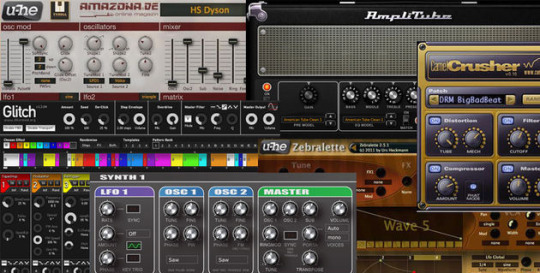
Music production tools are continuously expanding, providing a vast range of tools and techniques to create exceptional soundscapes. Although premium plugins and software often grab the attention, numerous freeware gems can elevate your production to new heights. This month, we have compiled a list of fifteen outstanding free tools that offer exceptional versatility and value, catering to a diverse range of musical needs.
We have compiled a list of the best online deals for Black Friday.
1. Tape It - Denoiser: Restore Clarity to Your Recordings
Background noise and unwanted artifacts can often hinder the pristine quality of your audio recordings. Tape It - Denoiser, a web-based tool, tackles this issue head-on, employing advanced algorithms to remove noise while preserving the integrity of your original signal. Its intuitive interface and straightforward workflow make it a breeze to use, ensuring that your audio shines through with newfound clarity.
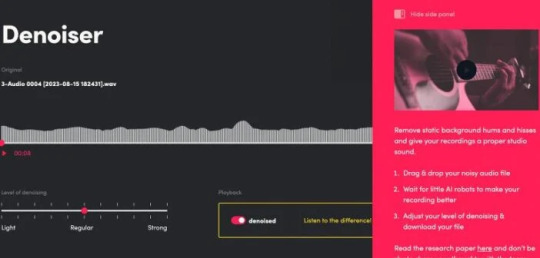
tape.it
2. Outobugi - Dynastia: Multiband Compression Mastery
Multiband compression is an indispensable tool for achieving balanced and dynamic mixes. Outobugi - Dynastia, a free multiband compressor, provides exceptional control over your audio, allowing you to refine the dynamics of specific frequency bands with precision. Its flexible parameters and intuitive design make it a powerful addition to your mixing arsenal.

outobugi.com
Outobugi Dynastia free multiband compressor
3. BFD Drums - BFD Player: Unleash Realistic Drum Sounds
Drum sounds are the backbone of countless musical genres, and BFD Drums - BFD Player delivers a wealth of authentic and impactful drum samples. This free drum instrument features a vast library of meticulously recorded drums, cymbals, and percussion, offering a wide range of grooves and fills to enhance your productions. Its intuitive interface and versatile features make it a valuable tool for drummers and producers alike.
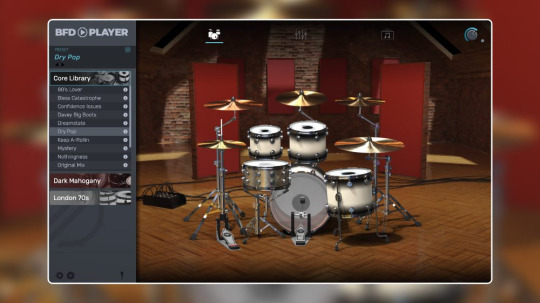
bfddrums.com
4. Ohm Force - Frohmager: Sculpt Your Soundscapes with Low-Pass Filtering
Low-pass filters play a crucial role in shaping the tonal characteristics of your audio. Ohm Force - Frohmager, a freeware low-pass filter, provides a versatile toolkit for crafting the desired sonic atmosphere. Its diverse range of filter types, modulation options, and customizable parameters enable you to create unique and evolving textures, adding depth and dimension to your sounds.
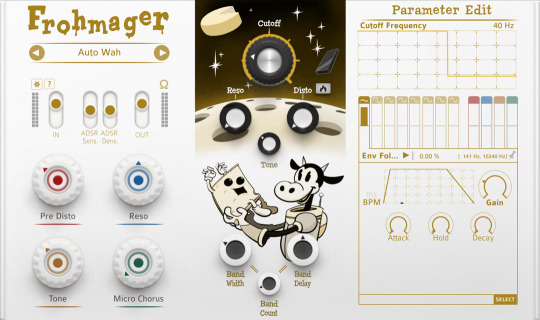
www.ohmforce.com
5. Samplab - TextToSample: Transform Words into Sounds
AI-powered tools are revolutionizing music production, and Samplab - TextToSample is a prime example. This innovative freeware application allows you to generate audio samples directly from text, transforming your creative ideas into unique sonic elements. Its simple interface and powerful algorithms make it an inspiring tool for experimentation and exploration, adding a touch of magic to your sound design process.
youtube
samplab.com
6. Surge: Wavetable Synthesis Versatility
Delve into the world of wavetable synthesis with Surge, a freeware wavetable synthesizer that offers a vast array of sounds and features. Its intuitive interface and comprehensive editing options empower you to create a wide range of textures, from classic analog emulations to futuristic soundscapes. With its extensive library of wavetables, oscillators, and modulation options, Surge provides endless possibilities for sonic exploration.
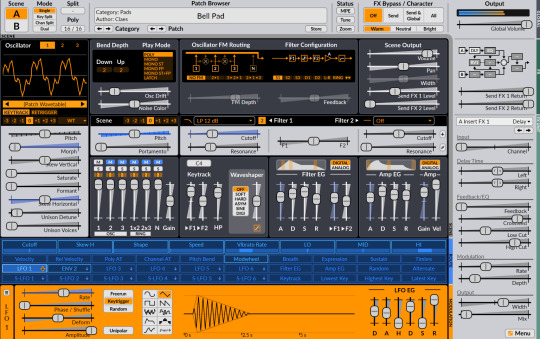
surge-synthesizer.github.io
7. Vital: Additive Synthesis for Unique Sounds
Embrace the power of additive synthesis with Vital, a freeware additive synthesizer designed for crafting unique and evolving sounds. Its intuitive interface and powerful synthesis engine make it easy to create a vast array of textures, from shimmering pads to complex lead sounds. With its extensive modulation options and comprehensive editing tools, Vital offers a versatile tool for sonic experimentation and sound design.

vital.audio
8. Tyrell N6: Warm Analog Emulation
Relive the warmth of classic analog synthesis with Tyrell N6, an emulation of the iconic Roland Juno-60 synthesizer. This freeware instrument captures the essence of the original hardware, delivering authentic analog sounds that evoke a sense of nostalgia and sonic richness. With its intuitive interface and emulation of the Juno-60's iconic chorus and arpeggiator, Tyrell N6 adds a touch of vintage charm to your productions.
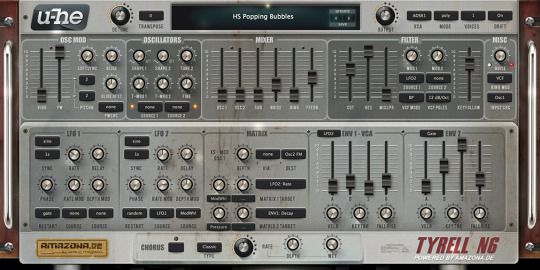
u-he.com
9. Spitfire Audio - LABS: High-Quality Orchestral Sounds
Expand your sonic palette with Spitfire Audio - LABS, a freeware orchestral instrument that features a wide range of high-quality samples. This collection includes a variety of string, brass, and woodwind instruments, meticulously recorded in world-
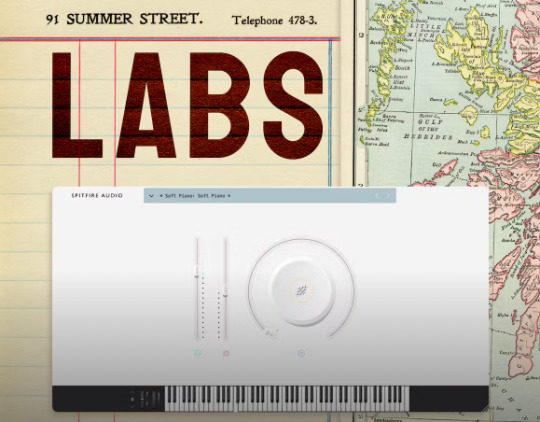
labs.spitfireaudio.com
Have Fun!
#musiclife#productionmusic#musiccomposer#gamecomposer#composerforgames#musiccomposerformedia#musictech#musictechnology#musicproducer#gamedev#gamedeveloper#musicproduction#freevst#freeware#plugins#Youtube
2 notes
·
View notes
Text
just woke up from an absolutely WILD dream
dreamt my gf and i were visiting my family for the holidays and at one point we went to a garage sale where we found a massive analog synthesizer being sold for cheap. i bought it, and then a couple nights later when my gf and i were playing around with it, we discovered that it was magic and would transform the person playing it into various things depending on how you set the parameters of the synth and what notes you played.
so of course we spent all night figuring out how to tf myself into fern and my gf into her goblin sona lmao. turns out fern's synth was a steady, 95 bpm bass melody played on a patch with a couple layered octaves, some fm synthesis, and a lot of filtering and distortion and movement on lfos and other effects to make it sound like it was purring and growling. (the "reset switch" to un-tf yourself was just a B note at any octave played on a completely plain sine wave for 4 seconds twice).
i spent the rest of the dream just Doing Stuff and having a very good time as a cattaur, and it felt very visceral and real, and that whole half of the dream focused a lot on how it felt to move around in my new body. it was really, really cool, and i still feel all tingly remembering it.
now where can i buy this synthesizer i need it immediately please.
11 notes
·
View notes
Text
Symbols, Archetypes, and Primal Energies. The Symbol of the Mother and Father.
🟣Psychoanalysis The concept of archetypes as repetitive, collective patterns was introduced into psychology by Carl Gustav Jung. He observed that in our shared reality, it is possible to identify timeless patterns that have a similar emotional and intuitive impact on every individual, regardless of where they live. 🟣Psychology Psychology, as a field of science derived from philosophy, has moved away from focusing on the human being as an individual and exploring their inner world. Moreover, during my psychology studies, I often encountered overt mockery of the concept of the unconscious and drives stemming from being human. I believe this is partly due to the egotistical attitude of European psychology towards the scientific achievements of other cultures. Hence, my mission – synthesis and understanding – of the reality around me through all possible tools and channels, and then passing on knowledge to others. At present, psychology (not psychotherapy) mainly focuses on understanding the causes and effects of collective actions, responding to the needs of the consumer world, which is only a fragment of the reality in which we, as humanity, once lived. Psychology is not a universal science. It measures issues related to humans in the context of the present because it has data from its mere 146-year history. This is helpful for us, our patterns, and our dramas. However, there are other systems that are based on universal symbols, archetypes, and primal energies. One of these systems is astrology, which approaches the two most deeply ingrained symbols in us – the symbols of the mother and father – in an interesting way. 🟣The Archetype of the Mother According to astrology, the symbol of the mother corresponds to the symbol of the Moon. This energy is responsible for our inner world, emotions, connection to intuition, extracting content from the unconscious, and transforming it into art or general creativity. Astrology divides the Zodiac into 4 elements. The Mother archetype – the Moon – is the first water. The element of water corresponds to the aforementioned values related to emotionality and art. Within the Zodiac circle, there are 3 water signs: the sensitive Cancer, the perceptive Scorpio, and the spiritual Pisces. Each of these signs is a kind of transformation of similar – watery – patterns at increasingly deeper, more insightful levels.
The archetype of the Mother in astrology, as a tender, nurturing caregiver, differs from the archetype of the Great Mother according to Jung. Jung saw this symbol as an infinite, vast energy, which is caring, nourishing, creative (that is, fertile and bringing life into the world) but also a strict and destructive force (natural disasters, overprotection, domination – mother).
🟣The Archetype of the Father According to astrology, the archetype of the father corresponds to the symbol of the Sun, following a simple analogy: mother – Moon, father – Sun. The symbol of the Sun represents the energizing male vital force. This energy is responsible for goal orientation, agency, and expansion. The Sun's energy is the one that fuels and gives life. The Sun is a typical fire element. Under this element, there are 3 zodiac signs: the untamed Aries, the leadership-driven Leo, and the ambitious Sagittarius. Interestingly, fatherly values are also found in the earthy Capricorn, which speaks of the often harsh outer world, hard work, and perseverance. On the opposite side of Capricorn in the zodiac is Cancer – the sign associated with the archetype of the Mother (the Moon). Here, the analogy is as follows: Moon – Cancer – Mother – Softness: Inner world Saturn – Capricorn – Father – Hardness: Outer world. This could mean that the Sun in the zodiac corresponds to the archetype of God the Father, not the earthly father – Capricorn.
The archetype of the Father according to Jung takes on the duality of the fatherly nature: the Caring, nurturing guide (which corresponds to the Mother – Moon in astrology) and the strict, demanding teacher (which corresponds to the archetype of Capricorn). 🟣Psychology + astrology = 🩷🩷🩷 I think that understanding systems based on primal energies is a fascinating complement to psychological knowledge, allowing one to view human nature in a completely new, non-obvious way. At first, it may seem complicated and difficult to understand, but the zodiac was created in a very intuitive and simple way. During my psychology studies, I noticed in the zodiac wheel a pattern of human developmental processes, starting from birth (Aries) and ending with death (Pisces).
0 notes
Text
Synapse Audio The Legend HZ (Windows) Download
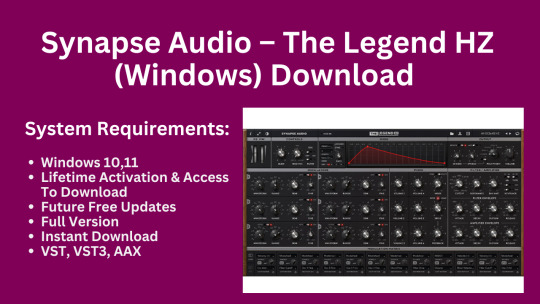
The Legend HZ is a state-of-the-art analog modeling synthesizer designed in collaboration with the legendary Hans Zimmer. Combining Synapse Audio’s expertise in synthesizer emulation with Zimmer’s cinematic vision, this software instrument offers unparalleled accuracy, versatility, and innovation for music production.
Download Here 👉The Legend HZ
Key Features
Unmatched Analog Modeling
Accurate Circuit Simulation: Faithfully emulates the classic analog synthesizer experience.
Hans Zimmer’s Touch: Incorporates features and design elements inspired by Zimmer’s iconic sound.
Vintage Hardware Inspiration: Includes a fixed filter bank modeled after Hans Zimmer’s personal Vintage 914 Fixed Filter Bank.
Enhanced Synthesis Engine
6 High-Quality VA Oscillators: Rich, warm, and authentic analog tones.
Polyphony and Unison Modes: Supports mono, unison, and 4-, 8-, and 12-voice polyphony for expansive soundscapes.
Advanced Modulation Matrix: Provides intricate control over sound shaping and modulation.
MSEG (Multi-Segment Envelope Generator): Enables complex and dynamic modulation possibilities.
Creative Tools for Cinematic Sound
32-Step Sequencer: Ideal for creating intricate patterns and arpeggios.
Expanded Effects Section: Includes high-quality effects for professional sound design.
Factory Presets: Over 200 presets designed by Hans Zimmer and Kevin Schroeder for instant inspiration.
Modern Production Integration
Plugin Formats: Supports VST, VST3, and AAX for seamless DAW compatibility.
MPE Support: Enables expressive performances with MIDI Polyphonic Expression.
8x Oversampling Engine: Ensures pristine audio quality with minimal artifacts.
Applications
Film Scoring and Cinematic Music: Ideal for epic, atmospheric, and dramatic compositions.
Electronic Music Production: Craft dynamic leads, lush pads, and punchy basslines.
Sound Design: Perfect for creating unique and evolving textures.
Specifications
Operating System: Windows 10, 11 (64-bit).
Plugin Formats: VST, VST3, AAX.
License: Lifetime activation with free future updates.
Delivery: Full version, instant download.
Why Choose The Legend HZ?
Developed with meticulous attention to detail, The Legend HZ offers a unique combination of analog authenticity, modern enhancements, and cinematic inspiration. Whether you’re composing a Hollywood blockbuster or crafting the next chart-topping track, this synthesizer provides the tools to bring your vision to life.
Download Here 👉The Legend HZ
0 notes
Text
Global Peptide Therapeutics Market Trends, Outlook, Growth, Share, Size & Forecast | 2024 - 2032
The global peptide therapeutics market is set to experience substantial growth in the coming years, driven by advancements in peptide synthesis technologies and the increasing application of peptides in various therapeutic fields, such as oncology, diabetes, and cardiovascular diseases. As of 2023, the peptide therapeutics market value stood at USD 36.1 billion, and it is anticipated to grow at a compound annual growth rate (CAGR) of 7.6% between 2024 and 2032. By the end of the forecast period, the market size is expected to reach approximately USD 69.9 billion.
Peptide therapeutics, often regarded as the future of medicine, offer advantages over traditional small molecule drugs, including higher specificity, fewer side effects, and the ability to target a broader range of diseases. With innovations in peptide synthesis technologies and an increasing pipeline of peptide-based drugs, the global market is witnessing rapid growth. This post delves into the segments, key players, market trends, growth drivers, and market outlook for peptide therapeutics, along with an analysis of the COVID-19 impact on the industry.
Get a Free Sample Report with Table of Contents: https://www.expertmarketresearch.com/reports/peptide-therapeutics-market/requestsample
Key Market Segments
The global peptide therapeutics market is highly segmented based on several factors, including product type, therapeutic application, route of administration, and region. Below is a breakdown of these segments:
1. By Product Type
Generic Peptides: These are often bioequivalent to branded peptide drugs and account for a significant share of the market due to their affordability and availability in large volumes.
Innovative Peptides: These are newly developed peptide-based drugs that offer higher specificity and efficacy in treating various diseases. With increasing R&D activities, the demand for innovative peptide therapeutics is expected to rise.
2. By Therapeutic Application
Peptide therapeutics are widely used in the treatment of various diseases. Some of the prominent therapeutic applications include:
Cancer: Peptides like somatostatin analogs and monoclonal antibody-based peptides have shown promise in targeting cancer cells.
Diabetes: Insulin peptides and glucagon-like peptides (GLP-1) are used for treating diabetes, a condition that is rising globally.
Cardiovascular Disorders: Peptide drugs for cardiovascular disease management, like B-type natriuretic peptide (BNP), are gaining traction.
Endocrine Disorders: Peptides for hormonal disorders, including pituitary-related diseases, are widely used.
Others: This includes areas such as central nervous system disorders, respiratory diseases, and inflammatory conditions.
3. By Route of Administration
Injectable: The injectable segment holds a dominant market share due to the established use of peptide therapeutics through subcutaneous injections and intravenous administration.
Oral: Oral peptide therapeutics are gaining traction due to patient preference for non-injectable forms. However, challenges remain regarding the stability of peptides in the gastrointestinal tract.
Nasal: Some peptides are administered nasally, especially for conditions affecting the central nervous system.
4. By Region
North America: The largest market share is held by North America, driven by advanced healthcare infrastructure, high healthcare spending, and the presence of leading pharmaceutical companies.
Europe: Europe is also a major player, especially with the growing adoption of peptide therapeutics for oncology and diabetes treatments.
Asia Pacific: The market in the Asia Pacific is growing rapidly, with countries like China, Japan, and India emerging as key hubs for peptide-based drug development.
Latin America & Middle East: Both these regions are witnessing steady growth due to improved healthcare access and awareness about peptide therapeutics.
Market Trends
Several key trends are shaping the global peptide therapeutics market:
1. Advancements in Peptide Synthesis Technologies
With continuous advancements in peptide synthesis technologies, such as solid-phase peptide synthesis (SPPS) and liquid-phase peptide synthesis (LPPS), the production of high-quality peptides at scale has become more efficient and cost-effective. This is accelerating the development and commercialization of new peptide drugs.
2. Increasing Investment in R&D
The growing number of clinical trials and the focus on developing novel peptide-based therapeutics for a wide range of diseases is a significant trend. Biopharmaceutical companies are investing heavily in R&D to bring innovative peptide therapeutics to market. Advances in peptide engineering, drug delivery systems, and peptide formulations are also driving market growth.
3. Emerging Applications of Peptides in Cancer Treatment
Peptides are showing promise as both targeted therapies and carriers for chemotherapeutic agents in cancer treatment. Peptide-based vaccines, immunotherapy, and targeted peptide-drug conjugates (PDCs) are making strides in oncology, offering hope for more effective and less toxic cancer therapies.
4. Personalized Medicine
Personalized or precision medicine is becoming a key driver for the growth of peptide therapeutics. Peptide biomarkers and tailored peptide therapies are expected to offer more specific treatments for individual patients based on genetic and molecular profiling.
5. Development of Oral Peptide Drugs
The oral administration of peptides is a game-changer, offering improved patient compliance compared to injectable therapies. Though peptide stability in the gastrointestinal tract remains a challenge, advancements in formulation technology are enabling the development of oral peptide drugs, making them more patient-friendly.
Growth Drivers
1. Rising Incidence of Chronic Diseases
The growing burden of chronic diseases, such as cancer, diabetes, cardiovascular diseases, and endocrine disorders, is driving the demand for peptide therapeutics. These diseases require long-term management, and peptides offer targeted and effective solutions.
2. Increasing Healthcare Expenditure
Rising healthcare expenditure in developed regions like North America and Europe is fostering the growth of the peptide therapeutics market. Governments and healthcare systems are increasingly investing in advanced treatments and therapies, including peptide-based drugs.
3. Aging Population
The global aging population is a critical driver for the peptide therapeutics market. Older adults are more susceptible to chronic diseases, and peptides offer an effective treatment for managing these conditions.
4. Regulatory Approvals and Market Expansion
The approval of new peptide-based therapeutics by regulatory agencies like the FDA and EMA is boosting market growth. As more peptides are approved for clinical use, their availability expands, and their adoption increases globally.
Key Players in the Peptide Therapeutics Market
Several major pharmaceutical and biotechnology companies dominate the peptide therapeutics market. These include:
Novo Nordisk: A leader in diabetes treatment, Novo Nordisk’s insulin peptides and GLP-1 receptor agonists like semaglutide are highly popular in the global market.
Ipsen: Ipsen is well-known for its peptide-based therapies in oncology, particularly for treating neuroendocrine tumours with somatostatin analogs.
Ferring Pharmaceuticals: Ferring is focused on peptide-based therapies for reproductive health and endocrinology.
Bachem AG: As a major player in the peptide synthesis and manufacturing sector, Bachem supplies the raw materials for peptide therapeutics and develops innovative peptide-based drugs.
Amgen: Amgen is developing several peptide-based therapies, particularly for cancer and metabolic diseases.
Sanofi: Sanofi is focusing on peptide-based treatments for diabetes and cardiovascular disorders, with liraglutide being a notable product in their portfolio.
Other prominent players in the peptide therapeutics space include Merck & Co., Inc., Teva Pharmaceuticals, AstraZeneca, and Novartis.
COVID-19 Impact on the Peptide Therapeutics Market
1. Disruptions in the Supply Chain
The COVID-19 pandemic caused significant disruptions in the global supply chain, including delays in the production and distribution of peptide-based therapeutics. However, as countries gradually recovered, the industry is now returning to pre-pandemic levels of production and distribution.
2. Increased Focus on Immunotherapies
The pandemic increased interest in peptide-based vaccines and immunotherapies to combat infectious diseases like COVID-19. The development of mRNA and peptide-based vaccines accelerated, potentially leading to a long-term increase in demand for peptide therapeutics.
3. Delayed Clinical Trials
Many clinical trials for peptide-based drugs were delayed during the pandemic due to restrictions on clinical visits and patient participation. However, as the world adapts to post-pandemic conditions, these trials are resuming, and the development of new peptide therapies is expected to progress.
Market Outlook and Future Trends
1. Continued Growth of the Market
The global peptide therapeutics market is expected to continue growing at a CAGR of 7.6% from 2024 to 2032. The development of new peptide drugs, especially in oncology and metabolic diseases, will contribute significantly to this growth.
2. Technological Advancements in Peptide Synthesis
As peptide synthesis technologies advance, the cost of production will decrease, making peptide therapeutics more accessible to a broader patient base. This will drive their adoption in emerging markets where healthcare access is improving.
3. Increasing Focus on Personalized Medicine
With the rise of genomic data, personalized medicine, and tailored peptide therapies will become a major growth avenue for the market. Peptides will be used to develop therapies that are specific to individual genetic profiles, leading to better patient outcomes.
FAQs
1. What are peptide therapeutics?
Peptide therapeutics are drugs made from short chains of amino acids (peptides) that are used to treat various diseases, including cancer, diabetes, and cardiovascular disorders.
2. What are the main therapeutic applications of peptides?
Peptides are widely used in oncology, diabetes, cardiovascular diseases, and endocrine disorders, among other therapeutic areas.
3. What are the growth drivers for the peptide therapeutics market?
Key drivers include the rising incidence of chronic diseases, advancements in peptide synthesis technologies, and increasing healthcare expenditure.
4. Who are the leading companies in the peptide therapeutics market?
Key players include Novo Nordisk, Ipsen, Ferring Pharmaceuticals, Bachem AG, Amgen, and Sanofi, among others.
5. How has COVID-19 impacted the peptide therapeutics market?
The pandemic disrupted supply chains and delayed clinical trials, but it also accelerated the development of peptide-based vaccines and therapies.
6. What is the future outlook for the peptide therapeutics market?
The market is expected to grow at a CAGR of 7.6% from 2024 to 2032, driven by advances in technology and increasing applications in various therapeutic areas.
Related Trending Related
https://www.expertmarketresearch.com/reports/silver-wound-dressing-markethttps://www.expertmarketresearch.com/reports/ischemic-heart-disease-drugs-markethttps://www.expertmarketresearch.com/clinical-trials/type-2-diabetes-drug-pipeline-analysis
0 notes
Text
How to Download Rob Papen – SubBoomBass 2

If you’re searching for cutting-edge bass sounds, Rob Papen – SubBoomBass 2 is the perfect tool for creating modern, powerful tracks. This advanced music software is an upgraded successor to the renowned SubBoomBass, offering unparalleled sound design capabilities and intuitive features for music producers. Here’s how you can download and maximize its potential.
Why Choose SubBoomBass 2?
Rob Papen – SubBoomBass 2 boasts a redesigned graphical interface, making navigation and control more seamless than ever. It retains its signature analog-modeled waveforms while introducing new spectral waveforms, high-quality samples, and string synthesis. The result? A vast palette of fresh, modern, and unique sounds for any genre. Key enhancements include:
X/Y Screen Control: Perfect for dynamic modulation.
Advanced Pattern Mode: Run up to 4 sequencers simultaneously.
Starred Preset Manager: Quickly access your favorite sounds.
Technical Specifications
Compatibility: MAC & Windows
Formats: VSTi, AUi
OS Requirements: macOS 10.6 or higher
Hardware Requirements: Minimum Intel/AMD Multi-core CPU, 4GB RAM
Steps to Download
Visit the official product page on Kala Plugins.
Select the Download option to purchase and activate your software.
Enjoy a lifetime activation license and start crafting your dream basslines today!
Unleash the Power of SubBoomBass 2
Whether you're producing EDM, hip-hop, or experimental tracks, SubBoomBass 2 is your go-to for groundbreaking bass. Start your creative journey now by downloading it from Kala Plugins!
0 notes
Text
How to Download Roland ZENOLOGY

If you're a music producer seeking powerful and flexible synthesis tools, Roland ZENOLOGY is a must-have. Built on Roland’s ZEN-Core synthesis system, ZENOLOGY Pro is a fully unlocked sound design tool that offers incredible sound quality, efficiency, and deep customization options for creating inspiring new sounds. Whether you're using Windows or macOS, this guide will walk you through how to download and install ZENOLOGY, and highlight its key features that will elevate your production game.
Why Choose Roland ZENOLOGY Pro?
ZENOLOGY Pro offers a lifetime activation, giving you access to one of the most comprehensive and dynamic synth engines available in the market. It's not just about playing preset sounds; with ZENOLOGY, you can dive into deep sound design thanks to its multi-core synthesis and layered sound engine.
Here’s what sets ZENOLOGY Pro apart:
ZEN-Core Synthesis System: This ultra-flexible system allows you to combine multiple synthesis types, including oscillators, filters, amplifiers, and LFOs, providing virtually limitless sound creation potential.
Extensive Interface: ZENOLOGY features a resizable, clean, and intuitive interface. With multiple editing modes, users can tweak every aspect of their sound designs.
Multi-Part Sound Creation: Use up to four parts simultaneously, combining thousands of waveforms, 10 filter types, and 11 LFO shapes for unprecedented sound flexibility.
Stunning Effects: By blending powerful effects and deep modulation capabilities, you can create intricate, evolving soundscapes that will inspire any music project.
Technical Specifications
Before downloading ZENOLOGY, make sure your system meets the following requirements:
For macOS:
Operating System: macOS 10.13 or later
Format: VST3, AU
Hardware Requirements: Intel or AMD Multi-core CPU, 4GB RAM minimum
For Windows:
Operating System: Windows 10 or later
Format: VST3, AU
Hardware Requirements: Intel or AMD Multi-core CPU, 4GB RAM minimum
Step-by-Step Guide to Download Roland ZENOLOGY
1. Check Your System Compatibility
Before proceeding with the download, ensure that your computer meets the hardware and software requirements for ZENOLOGY. Make sure your OS is up to date and that your system has at least 4GB of RAM for optimal performance.
2. Visit the Official Download Page
To download ZENOLOGY, head over to the official product page via this link: Download ZENOLOGY Pro.
3. Choose the Right Version
ZENOLOGY is available for both macOS and Windows. Select the version that matches your operating system. You will be provided with a full unlocked version that includes lifetime activation, so there’s no need for further upgrades or additional purchases after downloading.
4. Install the Software
Once the download is complete, run the installation file. Follow the prompts to install ZENOLOGY on your computer. For macOS users, the plugin will install in the VST3 or AU format, while Windows users will install the VST3 format. Installation is straightforward and should only take a few minutes.
5. Activate ZENOLOGY
After installation, open your DAW (Digital Audio Workstation), and ZENOLOGY will automatically integrate as a plugin. When prompted, enter your activation code for lifetime access. Now you can dive into the ZEN-Core synthesis system and begin designing your sounds.
ZENOLOGY Pro: Unleashing Creativity
One of the standout features of ZENOLOGY Pro is its ability to handle complex sound designs with ease. Whether you're working on cinematic soundscapes or chart-topping electronic music, the ZEN-Core engine offers everything from traditional analog-style synth sounds to futuristic digital tones. You can experiment with layered synthesis, advanced modulation, and lush effects to create entirely new sonic textures that push your music forward.
For producers who value versatility, ZENOLOGY’s ability to manage up to four parts simultaneously opens up vast possibilities for blending and layering different sounds. The animated parameter controls give real-time feedback, helping you visualize changes in your sound design, which is crucial when crafting evolving, complex sounds.
Conclusion
Roland ZENOLOGY Pro is a game-changing tool for any producer looking to expand their sound design capabilities. With its rich feature set, stunning sound quality, and user-friendly interface, it’s an essential addition to your production setup. Download it today and start exploring the limitless possibilities of ZEN-Core synthesis!
0 notes
Text
How to Download Arturia – SQ-80 V (MAC Only)

Downloading and installing the Arturia SQ-80 V for Mac is a straightforward process, provided you meet the necessary system requirements. This powerful software synth is a faithful recreation of the classic 1980s digital/analog hybrid synth, known for its rich, versatile sound and advanced modulation capabilities. Whether you're a seasoned producer or a novice looking to explore vintage synthesis, the Arturia SQ-80 V is a fantastic addition to your toolkit.
Tech Specs
Before you begin the download process, it's essential to ensure your system meets the following technical specifications:
Software Type: Synth Platform: Mac, PC Upgrade/Full: Full Download/Boxed: Download Bit Depth: 64-bit Format: AAX, VST, AU, NKS, Standalone Hardware Requirements – Mac: 2.5GHz CPU or higher, 4GB RAM minimum OS Requirements – Mac: macOS 10.13 or later Manufacturer Part Number: 210935_Down
Key Features of Arturia SQ-80 V
The Arturia SQ-80 V is packed with features that make it a standout digital wavemaker synthesizer software instrument. Some of the key features include:
Faithful Software Recreation: This software is a meticulous re-creation of the cult-classic 1980s digital/analog hybrid synth, capturing its unique charm and versatility.
Digital Oscillators: It boasts 3 digital oscillators based on the original DOC chip, providing a robust foundation for sound design.
Emulated Analog Components: The software includes an emulated analog resonant lowpass filter, 4 emulated analog VCAs, and 3 LFOs, delivering authentic analog warmth and depth.
Modulation Options: Mix up to 2 modulation sources with the mod mixer, offering expansive sound shaping possibilities.
Built-in Arpeggiator: A 7-mode arpeggiator is built in, delivering instant '80s vibes and rhythmic creativity.
Master Effects: The software features 15 master effects with 4 FX slots across 2 busses, which can be configured in series or parallel, allowing for extensive sound manipulation.
Waveforms and Presets: Over 400 available waveforms and 200+ factory presets, including 40 original patches, provide a vast palette of sounds to explore.
MPE Compatibility: The SQ-80 V is MPE compatible, ensuring it integrates seamlessly with modern MIDI controllers.
Download and Installation Instructions
To download the Arturia SQ-80 V for Mac, follow these steps:
Visit the Download Page: Go to the official download page.
Check System Compatibility: Ensure your Mac meets the system requirements (macOS 10.13 or later, 2.5GHz CPU or higher, and at least 4GB RAM).
Download the Software: Click on the download link and follow the on-screen instructions to download the installer package.
Run the Installer: Once the download is complete, locate the installer package in your Downloads folder and double-click to run it.
Follow Installation Prompts: Follow the prompts to install the software on your Mac. You may need to enter your administrator password to complete the installation.
Launch the Synth: After installation, launch the Arturia SQ-80 V from your Applications folder. You can now begin exploring its powerful features and creating music.
Conclusion
The Arturia SQ-80 V brings the iconic sounds of the 1980s into your modern studio setup, offering a rich blend of digital and analog synthesis. With its detailed emulations, extensive modulation options, and robust feature set, this software synth is a must-have for any music producer looking to expand their sonic palette. Downloading and installing the Arturia SQ-80 V on your Mac is simple and will unlock a world of creative possibilities.
For more information and to start your download, visit Arturia SQ-80 V Download.
0 notes